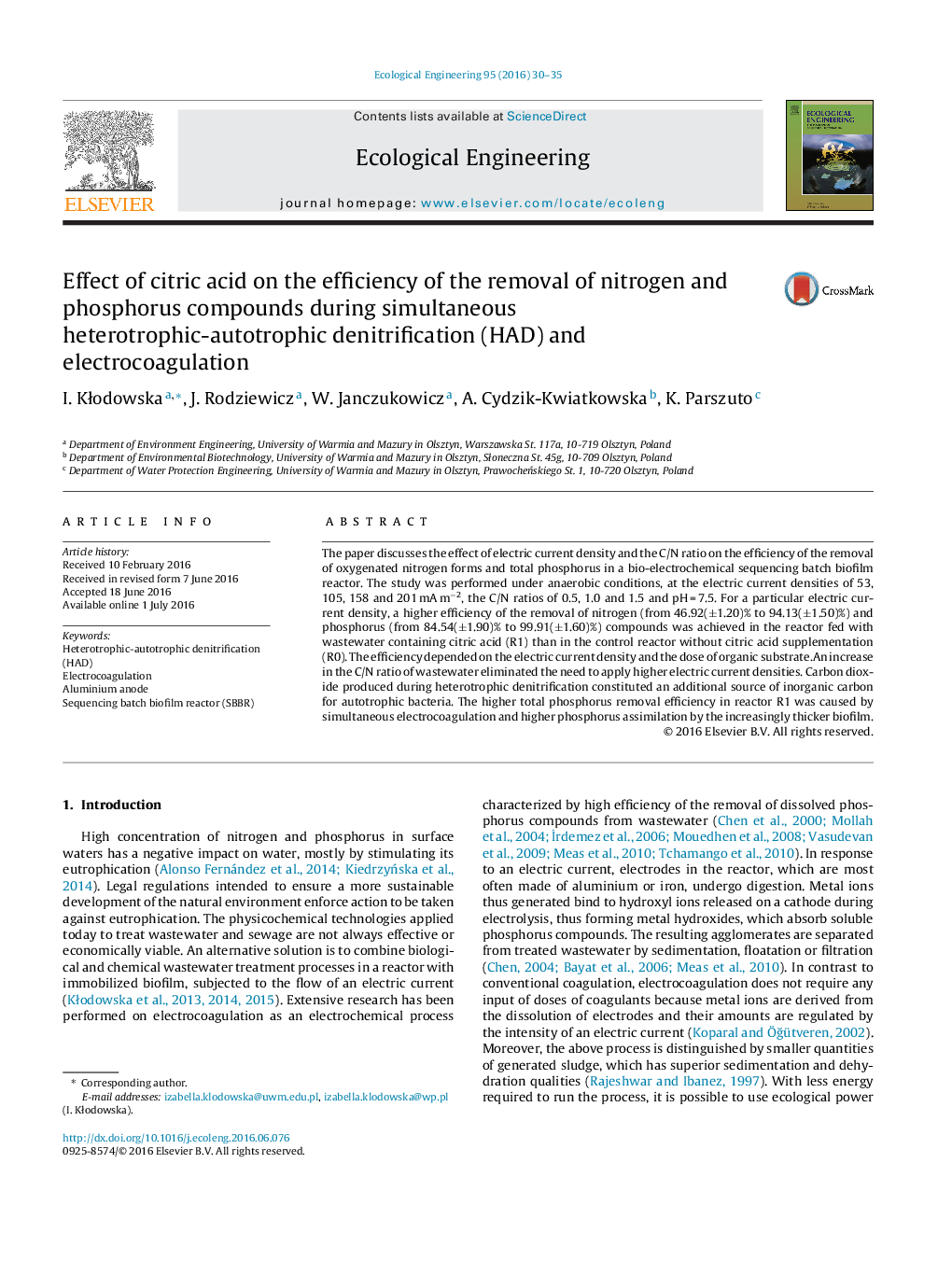| Article ID | Journal | Published Year | Pages | File Type |
|---|---|---|---|---|
| 4388424 | Ecological Engineering | 2016 | 6 Pages |
•Bio-electrochemical anaerobic SBBR was applied for nitrates and phosphorus removal.•Nitrates and P removal depended on the electric current density and the C/N ratio.•Nitrates removal was a result of heterotrophic-autotrophic denitrification.•Phosphorus removal was a result of electrocoagulation and assimilation by biofilm.•C/N ratio increase prevented the need of higher electric current density application.
The paper discusses the effect of electric current density and the C/N ratio on the efficiency of the removal of oxygenated nitrogen forms and total phosphorus in a bio-electrochemical sequencing batch biofilm reactor. The study was performed under anaerobic conditions, at the electric current densities of 53, 105, 158 and 201 mA m−2, the C/N ratios of 0.5, 1.0 and 1.5 and pH = 7.5. For a particular electric current density, a higher efficiency of the removal of nitrogen (from 46.92(±1.20)% to 94.13(±1.50)%) and phosphorus (from 84.54(±1.90)% to 99.91(±1.60)%) compounds was achieved in the reactor fed with wastewater containing citric acid (R1) than in the control reactor without citric acid supplementation (R0). The efficiency depended on the electric current density and the dose of organic substrate.An increase in the C/N ratio of wastewater eliminated the need to apply higher electric current densities. Carbon dioxide produced during heterotrophic denitrification constituted an additional source of inorganic carbon for autotrophic bacteria. The higher total phosphorus removal efficiency in reactor R1 was caused by simultaneous electrocoagulation and higher phosphorus assimilation by the increasingly thicker biofilm.
